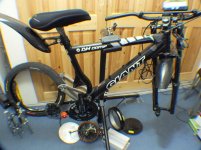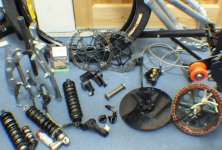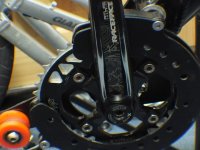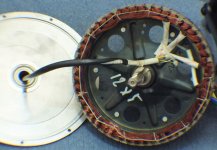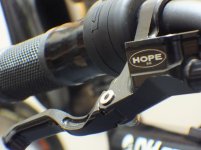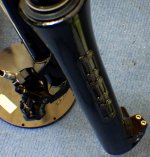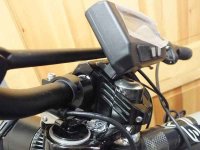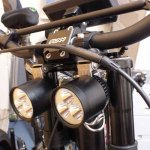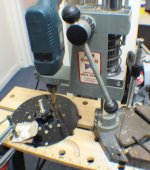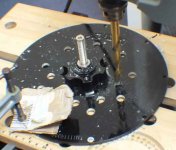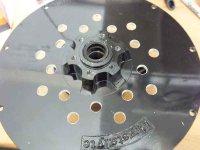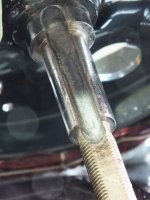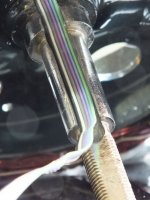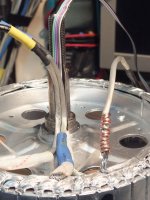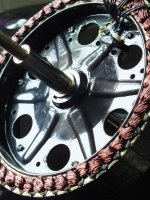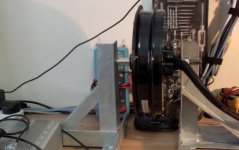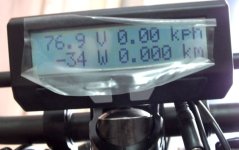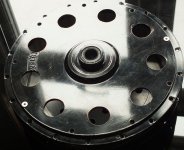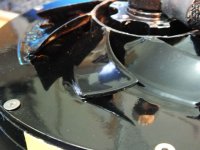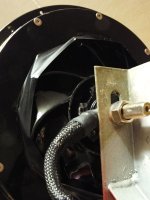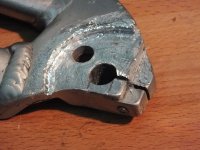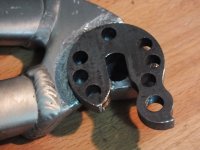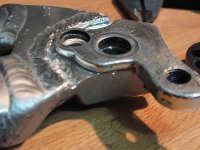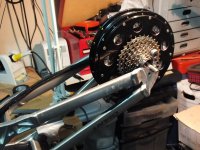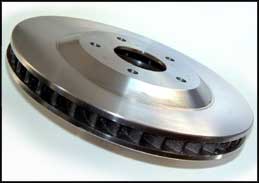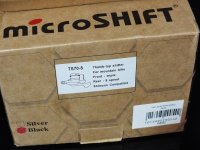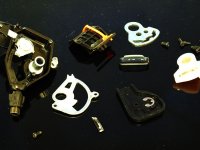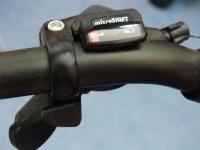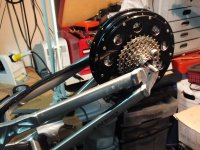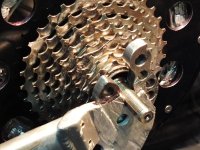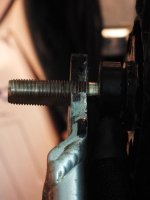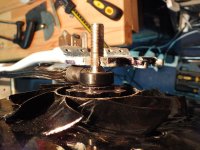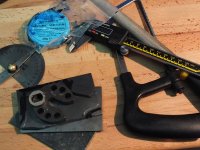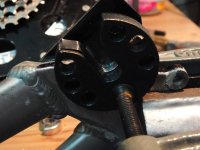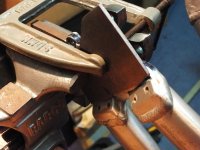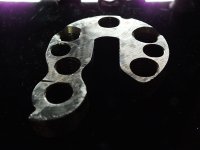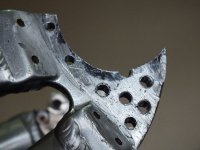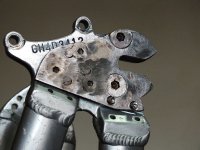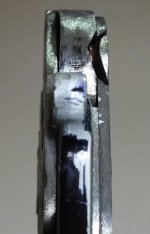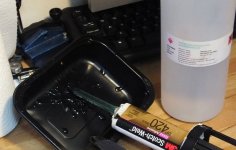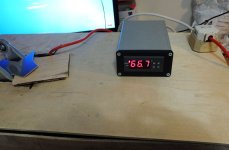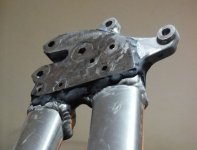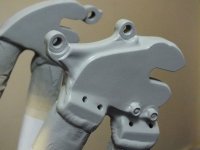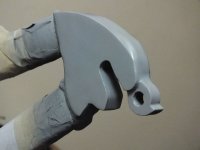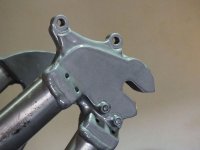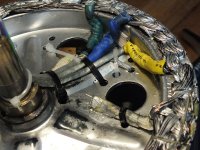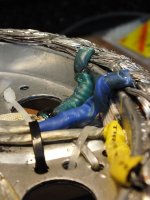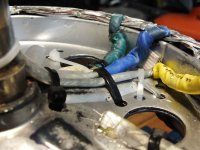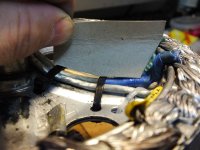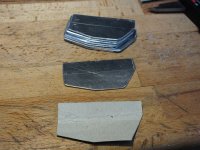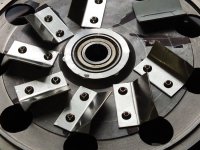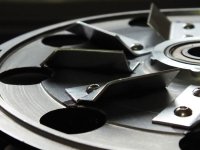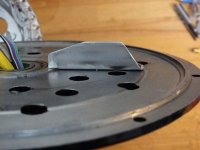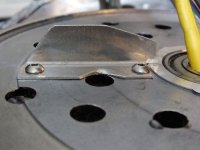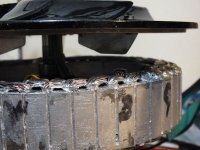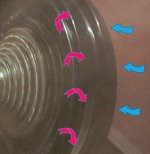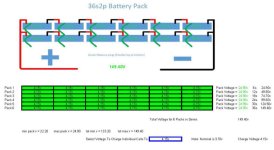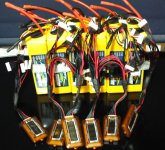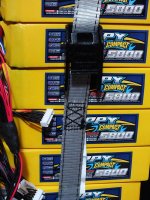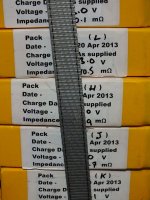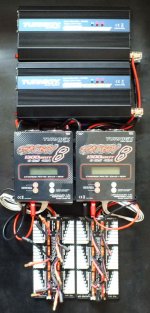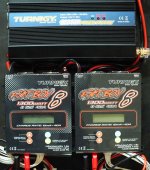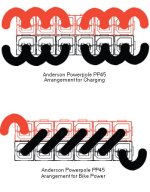GPM
1 mW
- Joined
- Jan 9, 2013
- Messages
- 14
GPM's E-Bike Project Jan 2013
Hello All,
Having had several e-bikes, modified a couple using off the shelf parts I was delighted to discover the ES forums in November of last year.
After taking inspiration from several of the projects here and having lurked in the background for a few months, Its time for me to unveil “Yet Another DH Comp Build”.
In early January I was able to purchase a medium frame 2003 DHComp in original and very good condition from E-bay for a reasonable price, I think much of my luck achieving a good price was due to the bike being offered as collection only from a fairly remote part of the country, I simply e-mailed the seller asking if arranged courier collection would they be happy to pack the bike.. anyhow to cut a long story short I won the action at a good price and arranged a courier to collect the bike from Wales and have it delivered to me in Cambridge UK the next day for £23 including £500 insurance.
I decided to strip the bike and rebuild replacing anything worn, eg bearings and fixings. At the same time I continued to read the forums here and decided I should uprate the brakes and purchased some Hope 6tis and 203mm saw tooth rotors, again I opted to replace all the seals and pads.
After sending the manitu 6way off to TF and having them service the unit and spec a spring .. I was impressed with the result but felt totally let down with the rockshox spring/oil forks on the bike, a little research suggested that they were a weak point and I resolved to replace them with some more modern Marzocchi 888s, eventually I found a set of 2006 RC2's for a good price … and yes the difference is astounding ..
Around this time I was following a thread here that talked of the differences between the Giant DH Comp and the Later 2005 DH Team rear swingarm, that being the additional 10mm width, this being something useful when fitting torque arms on the inside etc.
So when I stumbled upon a DH Team frame, bundled with a nice crank and a couple of decent shocks + various other parts for 200 odd pounds I could not resist .. in fact I will now end up with a complete second bike which I’m hoping to sell to offset some of the cost of the project so far.
This is what I have managed to pull together so far :-
Frame Giant DH Comp 2003 - Size Medium (18”)
Colour Stealth Black
Swing Arm - DHTeam 2006 version ( 150mm Width )
Rear Shock - Manitou Swinger 6 way
Fork - Marzocchi 888 RC2 (2006) – With FLW Single Piece Top Clamp and Bar Clamp
Handle Bars – Black Short Lift Renthal Motocross – Width Reduced
Brakes –
Front Hope Mono 6 ( Fully Serviced ) + 203mm Sawtooth Floating Rotor + BionX Press Switch
Rear Hope Mono 6ti ( Fully Serviced ) + 203mm Sawtooth Floating Rotor + BionX Press Switch
Headset - Brave Machine “Brave Rokah”
Bottom Bracket – Race Face Diabolus
Crank Set – Race Face Atlas , 44T , 166mm Arms
Pedals – DMR v8
Replaced all Suspension Linkage & Swingarm bearings
Wheels & Motor :-
Front – 24” Halo SAS Rim, Halo Spindoctor Hub, Laced 3 Cross with 13g Saphim Spokes
Rear – 24” Halo SAS Rim , Crystalyte 5304 v2/Phoenix Cruiser II(sensored) Hub Motor, 12g Saphim spokes Laced in Single Cross Pattern.
Tyres - 2 x Maxis Hookworm 24 x 2.5
24 FET 4115 MOSFET 84-132V Freeway Speed LYEN Edition Controller
Throttle - Magura 5k
Three speed switch
DC-DC Multi-Purpose Voltage Converter (lyen) + 15v 5a Toshiba Laptop PSU
Dual 1800 Lumen Cree Mounts / Dimmer
Ordered –
DP460 Black & EPX Mixer Gun Kit
DoctorBass(tm) Dropouts
TBD ..
No of Gears, Gear Selector Type , Battery Voltage / Ah/ Type , Charger / BMS.
I’m comfortable with the mechanical engineering side of things however when it comes to the electronics im less so and would appreciate any advice given ..
I can solder, use a DVM and read resister colour codes and understand the basics but that’s about as far as it goes ..
I'm reasonably confident I can beef up the phase wires running into the hub etc. but could really use some advice / help when it comes to working out what sort of battery to build, and a suitable charger/BMS for it.
Id like to get as much out of the 5304 and the Lyen 24FET as I can, so I guess running it up near its 150v
limit would be preferable?
Something like 36 series
36 * 3.7 =133
Freshly charged
36* 4.15= 149.5
Thanks
G.
Hello All,
Having had several e-bikes, modified a couple using off the shelf parts I was delighted to discover the ES forums in November of last year.
After taking inspiration from several of the projects here and having lurked in the background for a few months, Its time for me to unveil “Yet Another DH Comp Build”.
In early January I was able to purchase a medium frame 2003 DHComp in original and very good condition from E-bay for a reasonable price, I think much of my luck achieving a good price was due to the bike being offered as collection only from a fairly remote part of the country, I simply e-mailed the seller asking if arranged courier collection would they be happy to pack the bike.. anyhow to cut a long story short I won the action at a good price and arranged a courier to collect the bike from Wales and have it delivered to me in Cambridge UK the next day for £23 including £500 insurance.
I decided to strip the bike and rebuild replacing anything worn, eg bearings and fixings. At the same time I continued to read the forums here and decided I should uprate the brakes and purchased some Hope 6tis and 203mm saw tooth rotors, again I opted to replace all the seals and pads.
After sending the manitu 6way off to TF and having them service the unit and spec a spring .. I was impressed with the result but felt totally let down with the rockshox spring/oil forks on the bike, a little research suggested that they were a weak point and I resolved to replace them with some more modern Marzocchi 888s, eventually I found a set of 2006 RC2's for a good price … and yes the difference is astounding ..
Around this time I was following a thread here that talked of the differences between the Giant DH Comp and the Later 2005 DH Team rear swingarm, that being the additional 10mm width, this being something useful when fitting torque arms on the inside etc.
So when I stumbled upon a DH Team frame, bundled with a nice crank and a couple of decent shocks + various other parts for 200 odd pounds I could not resist .. in fact I will now end up with a complete second bike which I’m hoping to sell to offset some of the cost of the project so far.
This is what I have managed to pull together so far :-
Frame Giant DH Comp 2003 - Size Medium (18”)
Colour Stealth Black
Swing Arm - DHTeam 2006 version ( 150mm Width )
Rear Shock - Manitou Swinger 6 way
Fork - Marzocchi 888 RC2 (2006) – With FLW Single Piece Top Clamp and Bar Clamp
Handle Bars – Black Short Lift Renthal Motocross – Width Reduced
Brakes –
Front Hope Mono 6 ( Fully Serviced ) + 203mm Sawtooth Floating Rotor + BionX Press Switch
Rear Hope Mono 6ti ( Fully Serviced ) + 203mm Sawtooth Floating Rotor + BionX Press Switch
Headset - Brave Machine “Brave Rokah”
Bottom Bracket – Race Face Diabolus
Crank Set – Race Face Atlas , 44T , 166mm Arms
Pedals – DMR v8
Replaced all Suspension Linkage & Swingarm bearings
Wheels & Motor :-
Front – 24” Halo SAS Rim, Halo Spindoctor Hub, Laced 3 Cross with 13g Saphim Spokes
Rear – 24” Halo SAS Rim , Crystalyte 5304 v2/Phoenix Cruiser II(sensored) Hub Motor, 12g Saphim spokes Laced in Single Cross Pattern.
Tyres - 2 x Maxis Hookworm 24 x 2.5
24 FET 4115 MOSFET 84-132V Freeway Speed LYEN Edition Controller
Throttle - Magura 5k
Three speed switch
DC-DC Multi-Purpose Voltage Converter (lyen) + 15v 5a Toshiba Laptop PSU
Dual 1800 Lumen Cree Mounts / Dimmer
Ordered –
DP460 Black & EPX Mixer Gun Kit
DoctorBass(tm) Dropouts
TBD ..
No of Gears, Gear Selector Type , Battery Voltage / Ah/ Type , Charger / BMS.
I’m comfortable with the mechanical engineering side of things however when it comes to the electronics im less so and would appreciate any advice given ..
I can solder, use a DVM and read resister colour codes and understand the basics but that’s about as far as it goes ..
I'm reasonably confident I can beef up the phase wires running into the hub etc. but could really use some advice / help when it comes to working out what sort of battery to build, and a suitable charger/BMS for it.
Id like to get as much out of the 5304 and the Lyen 24FET as I can, so I guess running it up near its 150v
limit would be preferable?
Something like 36 series
36 * 3.7 =133
Freshly charged
36* 4.15= 149.5
Thanks
G.


